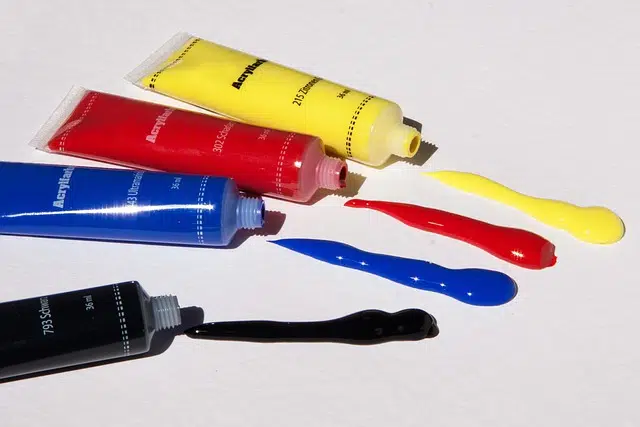
Acrylic paints have pigments dispersed in an emulsion containing an acrylic-type polymer.
Acrylic is a concept that, in the field of chemistry , is used as an adjective to describe that material obtained through the polymerization of a chemical compound called acrylic acid .
A member of the group of carboxylic acids (which have a functional group called the carboxy or carboxyl group, where a carbonyl group and a hydroxyl group coincide on the same carbon), acrylic acid has a double bond. It is possible to obtain it using propylene , which is a byproduct of the oil refining process.
acrylic acid
Acrylic acid, when in its pure state , is a liquid that has a strong odor and is colorless. It can be mixed with chloroform, alcohols, water and other substances and allows different polymers to be created easily. That is why acrylic acid and its derivatives are used for the production of different paints and plastics that are simply known as acrylics .
Acrylonitrile, for example, makes it possible to produce acrylic fiber . Similar to wool, this fiber is used to make clothing and to develop different textile products, such as carpets and blankets.

Acrylic paint offers a glossy finish.
A type of painting
Acrylic paints , on the other hand, present their pigments dispersed in an emulsion made with some acrylic-type polymer. By having a plasticized material, they can resist the action of water when they are already dry (this drying process, on the other hand, develops very quickly). Before drying, however, they dissolve in water. It should be noted that acrylic paints are usually named generically as latex .
For those people who are looking for shiny, good quality finishes in their paintings, but who do not have as much time or money to use oil paint , acrylic paint is the best option. According to artists who have specialized in this material, it offers very satisfactory results since the process is truly rewarding.
Use of acrylic paints
The first step in embarking on acrylic painting is choosing the right brand and format, something that can be overwhelming for beginners, given the dozens of options available on the market. Experts say that it is advisable to invest in mid-range or high-end products, since the difference with the cheapest ones is worth it. One of the basic differences is that cheap brands do not have as thick a pigment as the expensive ones, and this entails the need to apply two or three extra layers to achieve the same shine and saturation as with just one of the last ones.
Regarding the distribution format, which can be a bottle or tube , the ideal for someone without experience is to opt for the latter, since it is sold in smaller quantities than the bottle and that allows you to experiment without spending so much money; It should be noted that there is no difference in terms of the quality of the paint . Another essential point is the choice of colors; It is recommended to start with the basic ones, which can be yellow ocher, alizarin crimson, mars black, titanium white and ultramarine blue. With them it is possible to create practically all the necessary colors, as long as they are mixed properly.
The first purchase of brushes can be a bit arduous, given the great variety, but experience largely depends on this step. Basically, there are two categories according to which brushes are divided: the material of their bristles (most prefer synthetic ones) and the shape of their tip (round, cat's tongue or flat). Finally, it is time to buy a palette to mix and store the paint on, and the surface on which to paint, that is, canvas or wood.
A plastic material
Acrylic, finally, is the most common name for a plastic material that, due to its characteristics , can remain outdoors for a long time without deteriorating.
There are, in this framework, chairs, tables and various types of acrylic enclosures.
